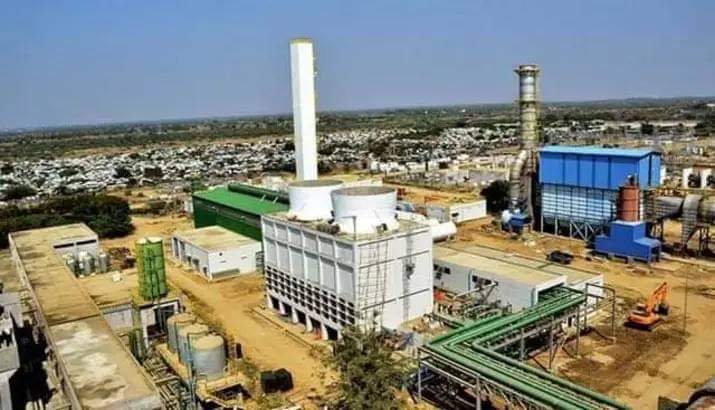
5G technology introduces the concept of flexible networks, which significantly enhances the way networks are designed, managed, and optimized.
This flexibility is key to supporting a wide range of applications with varying requirements, from low-latency communications to massive IoT deployments.









Here’s how 5G enables flexible networks:
1. Network Slicing
Customized Virtual Networks: Network slicing allows operators to create multiple virtual networks (or “slices”) on a single physical 5G infrastructure. Each slice is tailored to meet the specific needs of different applications or services.
Use Cases: For example, one slice could be dedicated to autonomous vehicles, requiring ultra-low latency and high reliability, while another slice might be optimized for IoT devices that need lower data rates but high device density.
Efficiency: This ensures that resources are allocated efficiently, reducing costs and improving performance for different use cases.
2. Dynamic Spectrum Sharing (DSS)
Real-Time Spectrum Allocation: 5G can dynamically allocate spectrum resources between 4G and 5G users based on demand. This allows for a more efficient use of spectrum, ensuring that 5G networks can coexist with existing 4G networks without requiring a complete overhaul.
Transition to 5G: DSS enables a smoother and faster transition to 5G, allowing operators to use their existing spectrum resources more flexibly as 5G adoption increases.
3. Edge Computing Integration
Processing at the Edge: 5G networks support edge computing, where data processing is done closer to the data source rather than in a centralized cloud. This reduces latency and bandwidth usage, making the network more responsive to real-time demands.
Scalability: By offloading processing tasks to the edge, 5G networks can scale more effectively, supporting a larger number of devices and applications without overwhelming the core network.
4. Software-Defined Networking (SDN) and Network Function Virtualization (NFV)
Programmable Networks: 5G networks leverage SDN and NFV to create programmable, software-based network functions. This allows for the dynamic reconfiguration of network resources, adapting to changing demands in real-time.
Cost-Effective: By virtualizing network functions, operators can reduce the need for specialized hardware, lowering costs and enabling faster deployment of new services.
5. Quality of Service (QoS) Management
Prioritizing Traffic: 5G networks can prioritize different types of traffic based on the needs of the application. For example, critical communications, such as those used in healthcare or autonomous vehicles, can be given priority over less critical data traffic.
Adaptive QoS: The network can dynamically adjust QoS parameters to maintain optimal performance for all users and applications, even under varying network conditions.
6. Multi-Access Edge Computing (MEC)
Localized Services: MEC allows services and applications to be deployed at the edge of the network, closer to the users. This reduces latency and improves the performance of applications that require real-time processing, such as augmented reality or industrial automation.
Flexible Deployment: With MEC, network operators can deploy applications and services more flexibly, responding to local demands without affecting the entire network.
7. Energy Efficiency
Adaptive Power Management: 5G networks can dynamically adjust power usage based on network traffic, reducing energy consumption during periods of low demand. This flexibility is essential for creating more sustainable and cost-effective networks.
Green Networking: By optimizing resource allocation and power usage, 5G supports the development of greener, more energy-efficient networks.
8. Support for Heterogeneous Networks (HetNets)
Seamless Integration: 5G can seamlessly integrate various types of networks, including cellular, Wi-Fi, and satellite, into a single, cohesive system. This allows for greater flexibility in how data is transmitted and received, ensuring consistent connectivity regardless of the underlying network.
Load Balancing: HetNets enable better load balancing, as the network can offload traffic to different network types based on availability and performance.
9. Orchestration and Automation
Self-Optimizing Networks: 5G networks are capable of self-optimization through AI and machine learning. They can automatically adjust configurations, manage resources, and resolve issues without human intervention, leading to more efficient and reliable network operations.
End-to-End Management: Orchestration tools allow operators to manage the entire network from a single platform, making it easier to deploy, monitor, and scale services as needed.
10. Support for Emerging Technologies
5G and AI/ML: The flexible nature of 5G networks makes them well-suited to support emerging technologies such as artificial intelligence and machine learning. These technologies can be used to optimize network performance, predict traffic patterns, and enhance security.
Adaptability: 5G’s flexibility allows it to adapt to new technologies and applications that may emerge in the future, ensuring that the network remains relevant and capable of meeting evolving demands.
Conclusion
5G’s flexible network architecture is a key enabler of next-generation applications and services. By allowing operators to tailor network resources to specific needs, 5G ensures that diverse use cases—from IoT to critical communications—can coexist and thrive on the same infrastructure. This adaptability will drive innovation across industries, making 5G a cornerstone of the connected future.

Leave a Reply